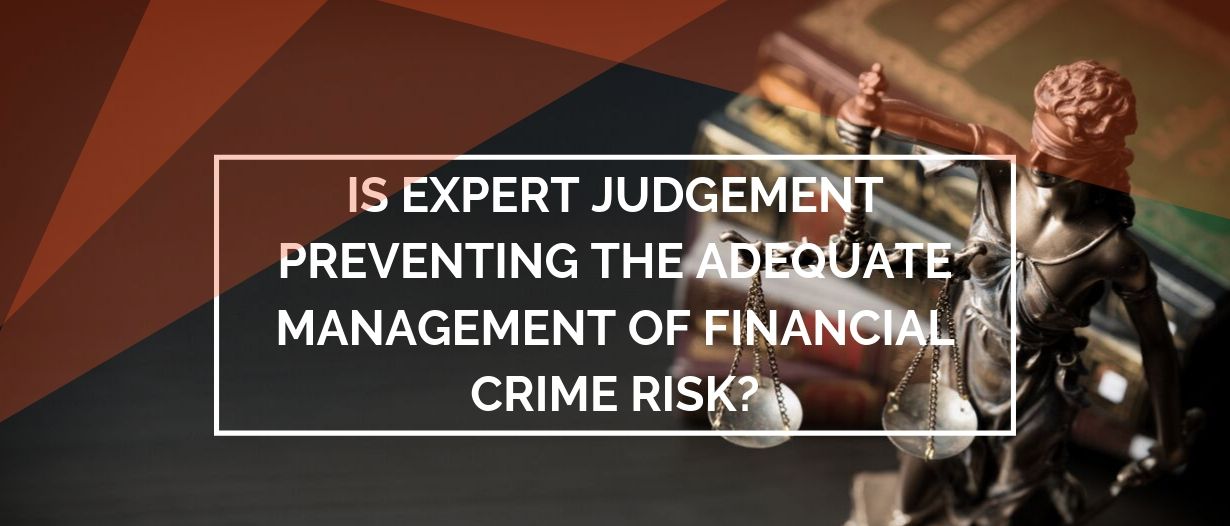“According to objective interpretations, probabilities are real. We may discover them by logic or estimate them through statistical analyses. According to subjective interpretations, probabilities are human beliefs. They are not intrinsic to nature. Individuals specify them to characterize their own uncertainty” (Holton, 2004)
TFG heard from Sihem Mouelhi at Elucidate to find out more.

To prevent financial crime, one must know precisely where their exposure lies, not on the basis of opinions, but instead on the basis of facts. Prevailing financial crime prevention practices in the financial services industry generally conceive of financial crime risk as being identifiable largely on the basis of expert judgement and commonplace due diligence procedures. However, financial crime risk, just like any other risk, can be better understood using data and modelling techniques, instead of common wisdom.
Today, when a financial institution carries out an assessment of its financial crime risk exposure using expert judgement, it will often misidentify contributing factors. The judgement of a compliance officer, while soundly reasoned, is limited by their inability to identify financial crime outside of their commonly perceived patterns. As such, financial crime risk managers will effectively experience confirmation bias as they continue to focus on known risk exposures and potentially miss other vulnerabilities.
The majority of individuals undertaking a financial crime risk assessment will do so proceeding from what is in fact, at its base, a probabilistic line of reasoning. The same is true of most existing methodologies, which are themselves derived largely from expert judgement, born of the aggregated knowledge derived from individuals’ previous experience in the field. The fundamental logic of this reasoning is sound: given past observed instances of an event, let us call it Event A, in many cases it was married to the presence of Circumstance B. Made more concrete: in the experience of John Doe, most instances he has ever observed of money laundering were carried out in Asia, where money laundering is Event A, and the location, Asia, is Circumstance B. This experience may be completely valid, and from it John Doe reasons that, across all countries money laundering risk is substantially higher when transacting with Asian countries versus any other region. It is a standard Bayesian statistical inference. John is not using any form of faulty logic, but instead is proceeding from a faulty assumption, namely that his experience is comprehensive. Herein lies John’s problem, and the problem with a complete reliance on expert judgement.
To truly succeed in identifying and preventing financial crime, biases due to limited perspectives must be acknowledged and controlled for. Such is the benefit of Big Data when put to the task as it can be understood not as the singular experience of an individual, but instead as the aggregated experience of every financial crime expert globally.

Given adequate data quantities, it is possible to capture a totalising view on financial crime risk. If across all instances of money being laundered, a disproportionate number of these events involve a certain nexus, the data will evidence that, and common expert judgements will either be confirmed or contradicted. Yet what may not be seen by one individual alone is the money laundered through other countries or regions generally viewed as being “low risk” according to expert judgement. Traditional wisdom would not key in on this specific exposure, allowing criminals to take advantage of it. Yet, with the right data and modelling approach, this exposure would become clear.
It is possible to obtain such a dataset. Using a risk-based approach, one could leverage the wealth of data produced by industry towards a data-driven method for the identification of financial crime risk. This method should be built with the aim of measuring the link between risk indicators, control weaknesses, and the occurrence of financial crime. Utilising a data-driven risk-based approach is paramount to correcting industry biases, and as such, providing those responsible for preventing financial crime with a sound basis for managing that risk.

































